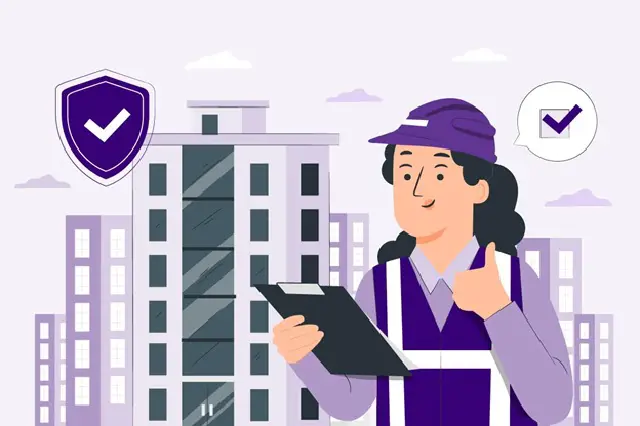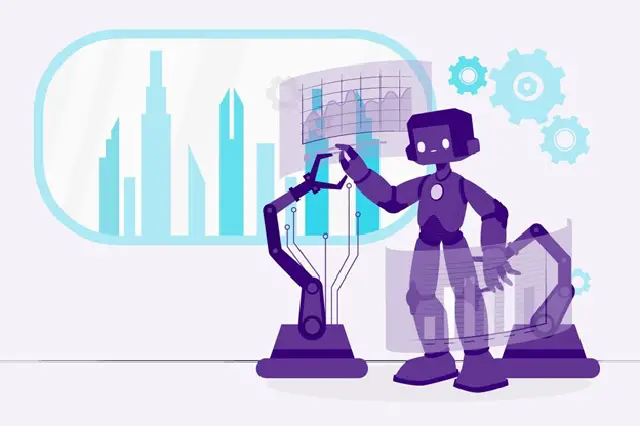
As per Statistics Times, 56.61% of the world’s population lives in urban areas, which is expected to grow to 68% by 2050. This trend of urbanization is expected to increase, with the urban population doubling its size by 2050.
The availability of good hospitals, schools, universities, transportation, and other high-quality services makes urban attractive places to live, work, and study. Alongside this, urban areas are preferred by students to get good access to education and favored by young professionals for a higher amount of job opportunities.
The high rise of urbanization also brings concerns about its development. In this article, we will look at transforming urban development with virtual reality and augmented reality technology.
Urban Development and its Significance

Urban development is the effort to improve our living conditions. It helps to upgrade residential, institutional, commercial, transportation, industrial, and similar areas for people. Improving living standards is the basic want of every human being because everybody wants a happy and peaceful life.
Sustainable urban development is even more important for many reasons, including long-term economic benefits and improved quality of life. With sustainable urban development, minimizing energy usage, waste, and pollution and reducing environmental impact is possible.
The field of urban development is getting the amazing transformation with the help of virtual reality (VR) and augmented reality (AR). These two technologies are reforming how we plan, design, and invest in development.
Definition of Virtual Reality and Augmented Reality Technology
Virtual reality is a technology that allows users to interact in a three-dimensional (3D) or digital environment, yet it feels as if it is happening in the physical environment. Users get this experience by wearing devices such as helmets or goggles.
Virtual reality allows users to get real-world experience by giving the illusion of “being there” with the help of motion detectors that pick up the user’s actions and adjust the screen accordingly.
Similarly, augmented reality is a technology that adds objects like text, graphics, audio, or other virtual augmentation to the user’s perception. It enhances the experience of the user’s environment.
Augmented reality starts by capturing the user’s surrounding with a camera and sensors. Then, the software collects and processes the data to decide the location of AR objects and add relevant objects to the screen based on the collected data.
Benefits of Virtual Reality and Augmented Reality in Urban Development
We can revolutionize urban development with the right use of VR and AR technology. There are many benefits of these technologies. Here are some:
1. Visualizing Big Data
A lot of data is collected when designing sustainable cities, which can sometimes be overwhelming. Urban planners will be going to face a significant number of factors that must be integrated into city design.
Many professionals, including clients, politicians, planners, and communities, will be involved in the project. The collected data should be understandable for them. With 3D visual representations in VR and AR, anyone can see the data clearly. They can visualize where adjustments should be made and provide suggestions for city planning.
2. Encourage Citizens to Participate
Urban development projects need to consult the public before the actual work start. Citizens’ participation is significant for the urban development project. VR and AR create an environment to interact in the project. Citizens can see design plans and 3D photographs of future buildings and developments.
Furthermore, citizens can get a more realistic view of how well the project fits in the environment. They can provide feedback and suggestions on whether they agree with the proposed project. This not only motivates them to participate in the current project, but it will also encourage them to take part in future projects.
3. Enhance Urban Landscapes
Some people want to be surrounded by as many green plants as possible; others feel unsafe. Using AR and VR to decide what to use helps architects and planners to make well-informed decisions.
VR and AR allow the creation of better pedestrian pathways, preserve historic buildings, and improve public transit. Designers can make visualization where rocks, ponds, lawn maps, and other landscapes should be.
4. Emphatic Planning
Cities are becoming more complicated, so entire communities must be involved in urban development planning and management. Virtual reality creates an environment to interact and share feedback across the groups.
People can visualize, communicate, and evaluate new developments together collaboratively. In this way, they can overcome conflict and harmonize views in the planning process.
Application of Virtual Reality and Augmented Reality in Urban Development

Virtual and augmented reality have numerous applications in urban development, helping the planning and developing phases. Some of the major applications are:
1. Urban Design
AR and VR can be used to plan and design smart cities. It can help city planners to see how new landscapes will look. They can see what will work and identify potential problems that may arise in the future.
Three-dimensional models are an essential part of the design in urban development because 3D models give realistic and detailed views of the objects.
2. Historical Preservation and Cultural Heritage
AR can help to preserve historic buildings without damaging them. Whenever there is a need for change in the landscape, we can get a perfect replacement or use other physical spaces without destroying historic buildings.
AR and VR can give deep insights and suggestions on how changes should be made. By preserving historic buildings, visitors can experience the past, learn about a place and understand its importance.
3. Urban Simulation and Analysis
AR and VR can simulate and analyze urban environments, enabling planners to assess development’s impact on different factors. These technologies help planners to optimize urban designs for efficiency and safety by simulating traffic flow, pedestrian movement, and utilization of public space.
AR provides real-time energy consumption, air quality, and temperature data, assisting sustainable urban development.
Implementation and Integration of VR and AR in Urban Development

Implementation and integration of AR and VR in urban development involve several steps. Here’s an overview of the process:
- Identify Use Cases: The first step is identifying Augmented and virtual reality use cases in urban development. You have to find the area where these technologies bring high value. Urban planning is also required in this step.
- Technology Selection: Choose technologies that align with your project. It could be choosing the right hardware and software platforms, considering ease of use, compatibility, and scalability.
- Data Collection and Modeling: Gather relevant and required data for AR and VR experiences. It includes data about the environment and buildings, GIS data, and historical records.
- Design Model: This step includes developing 3D models, animations, textures, elements, user interfaces, and navigation systems.
- Testing and Iteration: Testing before applying it in the real world is important. Testing is crucial to ensure the functionality, usability, and effectiveness of AR/VR experiences in urban development.
- Deployment and Implementation: Deploy the AR/VR solutions in the urban development process. This step includes setting up AR viewing stations, VR labs, and applications for public use.
- Monitoring and Evaluation: You have to continuously monitor and evaluate the function of AR and VR experiences. Collecting feedback, assessing the achievement of objectives, and measuring engagement are key to improving.
Challenges and Considerations in Utilizing VR and AR Technology
Virtual reality (VR) and augmented reality (AR) have many benefits but also come with challenges and considerations. Here are some:
1. Cost and Infrastructure
Implementing AR and VR requires investment in hardware, software, and infrastructure. VR headsets, AR glasses, and powerful computers are expensive. You also need a high-speed and trustworthy internet connection.
Otherwise, your experience with Augmented and virtual reality might get worse. Evaluating the required budget before starting AR/VR projects is essential.
2. Technical Limitations and Device Compatibility
AR and VR technology is constantly evolving and bringing new improvements. New devices and software might not be compatible with old tools. It might be difficult to operate when deploying AR and VR experiences across different platforms.
Organizations should keep up to date with technological advancement and ensure compatibility across different ranges of devices.
3. Data Integration and Accuracy
Augmented and virtual reality experiences integrate real-world data and information, such as Geographic Information System (GIS), real-time sensor data, and building models. Delivering reliable virtual experiences might sometimes need to be more accurate.
Organizations need to establish effective data management and provide error-free experiences. Along with it, they should ensure data privacy and security problems.
4. Training and Adoption
Only some people know how to use AR and VR technologies. Some may need to become more familiar with these technologies and their potential benefits. A well-trained and experienced technician is required to use these technologies appropriately.
The organizations should provide training programs and events to enable smooth adoption and proper utilization of AR and VR tools.
Future Trends and Developments

Virtual and augmented reality has made good impressions worldwide. These technologies have touched every industry with their unique features and benefits. AR/VR technologies are going to emerge rapidly in the coming years. Let’s look at some of the future trends of these technologies.
1. Integration of Artificial Intelligence in AR and VR Space
Artificial intelligence (AI), Virtual Reality (VR), and Augmented Reality (AR) have proven their potential by benefitting different sectors with their individual features. In the future, developers will use AI features such as machine learning (ML) algorithms and other AI practices to assist AR/VR experiences.
Collaboration with AI will help to create highly collaborative workspaces and improve image recognition services. The integration of AI is helpful for creating a dynamic and responsive virtual world.
2. The Popularity of AR Avatars
The popularity of virtual celebrities has been increasing in the past few years. The fictional character has become a virtual influencer for consumers. The rise in the trend of AR avatars has changed influencer marketing.
Business leaders are considering using avatars to attract users, help customers in navigation, and improve their overall experience.
3. Immersive Educational Experiences
Augmented and virtual reality continues to touch different industries like gaming, entertainment, and shopping; education will experience exceptional growth. AR and VR technologies help teachers to engage with students in new and exciting ways.
Augmented reality enables teachers to enhance their skills by giving them access to real-time information. They can polish their skills with the additional information provided by AR experiences.
4. Remote Help with Augmented and Virtual Reality
Artificial and virtual reality trends help in remote collaboration and assistance. Technicians can see on-site cases from smartphones or other devices. They can give guidance or provide necessary files to remote locations.
Technicians can get immediate help from experts remotely. So they can discuss the problems, execute the field repairs, or make improvements.
5. AR Integrated Vehicles
Electric vehicles are becoming more and more popular. It has got people’s attention, and they want to get into self-driving cars. Manufacturing automotive vehicle is complex. With the power of AR, manufacturers can break down complex tasks into easy-to-understand processes.
AR will guide operators to do the work step by step so they don’t need to memorize each step. AR enables one to eliminate distractions and stay focused on the task.
Conclusion
As discussed above, urban development brings many benefits, including improved quality of life, economic benefits, and environmental conservation. Integrating Augmented Reality (AR) and Virtual Reality (VR) improves even more in the urban development process.
AR and VR assist in visualizing big data, encouraging citizens to participate, enhancing the urban landscape, and helping in empathic planning. AR and VR are applicable for urban design, prevention of historical buildings, and urban simulation and analysis in urban development.
High cost, technical limitations, security problems, and lack of training are some disadvantages of augmented and virtual reality in urban development. The coming future of AR and VR looks fruitful for every industry that will adopt it early.
Also Read: